List of preserved historic blast furnaces
This list of preserved historic blast furnaces contains decommissioned blast furnaces, of which substantial remains survive. The furnaces are preserved in a park or museum, or as a site otherwise open to visitors, or intended to become such.
While pre-20th-century blast furnaces already have a long history of monument preservation, the perception of 20th century mass production blast furnace installations as industrial heritage is a comparably new trend. For a long time, it has been normal procedure for such a blast furnace to be demolished after being decommissioned and either be replaced with a newer, improved one, or to have the entire site demolished to make room for follow-up use of the area. It has only been in recent years that numerous countries have realized the value of blast furnaces as a part of their industrial history.
Historically, the first such blast furnace not to be demolished stands in Starachowice, Poland (decommissioned in 1968), followed by the last blast furnace of Yahata Steel Works in Yahatahigashi-ku, Kitakyūshū, Japan (decommissioned in 1972) and the "Carrie Furnaces" in Homestead, Pennsylvania in the United States (decommissioned in 1978). One of the two blast furnaces in Neunkirchen in Germany (decommissioned in 1982) was the first blast furnace worldwide to be not just preserved, but actively refurbished for the purpose of preservation.
For 20th-century mass production blast furnaces, the degree of accurate preservation versus integration into new structures, or even re-purposing, differs between the various sites. Colorful illumination installations at night are common.
List of preserved historic pre-mass production blast furnaces around the world
Australia
| City and state | Name of location | Current purpose, preserved installations and public attractions | Photo | Official website |
|---|---|---|---|---|
| Lal Lal, Victoria | Lal Lal Iron Company (operated on site from the 1870s until 1884) | Furnace built in 1880, operated until 1884. Now part of the Lal Lal-Bungal Historic Area. | | Parks Victoria |
Austria
| City | Name of location | Current purpose, preserved installations and public attractions | Photo | Official website |
|---|---|---|---|---|
| Thomatal, Tamsweg, Salzburg | Bergbaumuseum Hochofen Bundschuh (decommissioned in 1903, opened to the public in 1984) | The blast furnace (built in 1867) is now a museum. | ||
Germany
| City | Name of location | Current purpose, preserved installations and public attractions | Photo | Official website |
|---|---|---|---|---|
| Between Grünebach and Alsdorf, Rhineland-Palatinate | Neugrünebacher Hütte (decommissioned in 1963) | The historic blast furnace has been put under monument conservation in 1983. | ||
| Wenden, Sauerland, North Rhine-Westphalia | Wendener Hütte (decommissioned in 1866) | The casthouse, which contains the blast furnace, is now a museum. | | |
| Balve, Sauerland, North Rhine-Westphalia | Luisenhütte Wocklum (decommissioned in 1865) | The casthouse, which contains the oldest completely preserved blast furnace in Germany, was declared a technical cultural monument 1950. Following an extensive two-year renovation, it was reopened as a museum in 2006. | | |
| Bockenem-Bornum, Ambergau, Lower Saxony | Wilhelmshütte (decommissioned in 1966, opened to the public in 1982) | The historic blast furnace (built in 1783) is now a museum. | ||
Poland
| City | Name of location | Current purpose, preserved installations and public attractions | Photo | Official website |
|---|---|---|---|---|
| Chlewiska, Gmina Chlewiska, Szydłowiec County, Mazowieckie Voivodeship | Iron Works in Chlewiska (built between 1882 and 1892, decommissioned in 1940) | Chlewiska Iron Works is now part of the Museum of Technology and is opened for tourists. | ||
| Kuźniaki, Gmina Strawczyn, Kielce County, Świętokrzyskie Voivodeship | Metallurgical Furnace in Kuźniaki (decommissioned in 1897) | The casthouse, which contains the blast furnace, has been declared a historical monument and is open to visitors. |  | |
| Samsonów, Gmina Zagnańsk, Kielce County, Świętokrzyskie Voivodeship | Huta Józef (decommissioned in 1866) | Installation was declared as a historical monument in 1967 and opened to visitors in 1983. |
Romania
| City | Name of location | Current purpose, preserved installations and public attractions | Photo | Official website |
|---|---|---|---|---|
| Govăjdia, Hunedoara County | Blast Furnace in Govăjdia built between 1806-1810 on the site of an old iron working workshop called "Old Limpert", the furnace's capacity is 43,9 cubic meters and it operated with charcoal brought from Vadu Dobrii and the iron ore mined and brought from the iron ore mines at Ghelari via narrow-gauge railway. It was decommissioned in 1924 after the start of the ironworks at Hunedoara in 1884. This blast furnace is famous for providing iron for the steel of the Eiffel Tower in Paris, Some of the iron parts for the tower were made here. | The casthouse, which contains the blast furnace, has been declared a historical monument since 2000 and is open to visitors since 2007 | 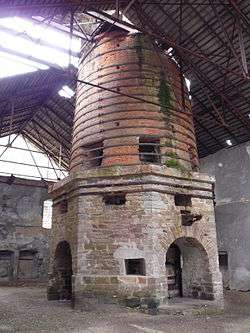 | |
Slovakia
| County | Name of location | Current purpose, preserved installations and public attractions | Photo | Official website |
|---|---|---|---|---|
| Near village Osrblie | Tri vody (Three Waters) | The oldest blast furnace in the former Kingdom of Hungary. The blast furnace was built in 1795, and burnt charcoal as fuel. Fire in the 1882 destroyed the manufacture. Casing, which is 8.5 m long, is still preserved. |
Ukraine
| County | Name of location | Current purpose, preserved installations and public attractions | Photo | Official website |
|---|---|---|---|---|
| Between villages of Yasen’ and Hryn’kiw, Rozhniativ Raion, Ivano-Frankivsk Oblast. | A charcoal blast furnace built in 1810. It was built by wizards who was Boykos. Operated until 1818, using iron ore from neighbourhood. There was casthouse and forge there. Today it is may be oldest historical blast furnace in Ukraine.[1] |  | ||
| Village Maidan, Drohobych Raion, Lviv oblast | A charcoal blast furnace built in 1814. It was of 9,48 m high. | 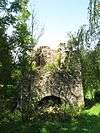 | ||
| Village Mihove, Vyzhnytsia Raion, Chernivtsi Oblast | A charcoal blast furnace built in 1835. It was of 14 m high. |  |
United Kingdom
England
| County | Name of location | Current purpose, preserved installations and public attractions | Photo | Official website |
|---|---|---|---|---|
| Cumbria | Newland Furnace | A charcoal blast furnace built in 1747. Operated by Harrison Ainslie until 1891. Open on heritage open days and by appointment. | 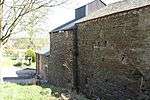 | |
| Cumbria | Backbarrow Furnace | Built as a charcoal blast furnace in 1711. Operated by Harrison Ainslie from 1818 until 1914. Closed 1966. On private land but visible from the road | 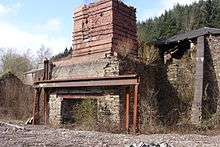 | |
| Broughton-in-Furness, Cumbria | Duddon furnace | A charcoal blast furnace, operating 1736-1867. Managed by Cumbria Tourist Board |  | |
| Telford | Blists Hill | The remains of three 19th-century blast furnaces stand with the Blists Hill site of Ironbridge Gorge Museum Trust. Madeley Wood Company built these in 1832. They worked until 1912. |  | IGMT |
| Telford | Coalbrookdale | Originally a charcoal furnace, the old blast furnace at Coalbrookdale was leased in 1709 by Abraham Darby I, who used it to make coke pig iron and created the first long-term business to do so. The furnace remained in use until the 19th century and now forms part of the Ironbridge Gorge Museum Trust's Museum of Iron. | 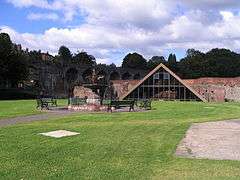 | IGMT |
| Telford | Madeley Wood or Bedlam | Two blast furnaces standing beside the road near river Severn, built in 1756 by Madeley Wood Company, and taken over by the Coalbrookdale Company in 1776. Further furnaces were built in the 19th century and operated until 1912. The first two furnaces were blown using water wheels using pumped by steam engines. The site is owned by Ironbridge Gorge Museum Trust |  | |
| The Forest of Dean | Darkhill Ironworks | Internationally important remains associated with the development of the iron and steel industry. Built in 1818 by David Mushet and later managed by his son Robert Mushet; the site of several key advances in iron and steel production. | 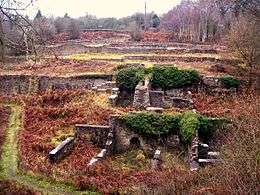 | |
| The Forest of Dean | Whitecliff Ironworks | Industrial remains of a coke-fired furnace, built at Coleford in 1798 and associated with the development of the iron industry in the Forest of Dean. | 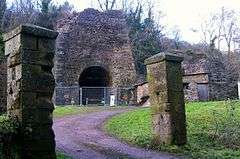 | |
| The Forest of Dean | Parkend Ironworks | Was a coke-fired furnace built in 1799. Most of the ironworks were demolished between 1890 and 1908, but the engine house survived and is arguably the best preserved example of its kind to be found in the UK. | 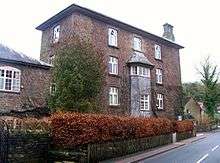 |
Scotland
| County | Name of location | Current purpose, preserved installations and public attractions | Photo | Official website |
|---|---|---|---|---|
| Argyllshire | Bonawe or Lorn Furnace | A charcoal furnace operating 1753-1876, owned by the Newland Company from Furness and using iron ore from there. |  | Historic Iron Furnace |
| Argyllshire | Argyll or Craleckan or Goatfield Furnace, Furnace | A charcoal furnace operating 1755-1813, belonging to Kendall & Co., owners of Duddon furnace in Cumbria and other ironworks, using iron ore from Cumbria and local charcoal. The furnace building stands beside the road in the village of Furnace and can be viewed from the road: no public access. | 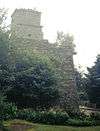 |
Wales
| County | Name of location | Current purpose, preserved installations and public attractions | Photo | Official website |
|---|---|---|---|---|
| Ceredigion | Dyfi Furnace | A charcoal blast furnace close to the west coast of Wales, built in 1755 and long worked by Kendall & Co., it operated until 1805. Now preserved by Cadw. |  | [2] |
| Monmouthshire | Tintern Furnace | The excavated site of a charcoal blast furnace on the Angidy Brook is displayed as a tourist attraction. This was part of a series of ironworks (including finery forges and wireworks which existed in the valley, originally eatablished by the Company of Mineral and Battery Works and its farmers. It is maintained by Monmouthshire County Council | [3] | |
| Torfaen | Blaenavon Ironworks | An integrated coke-fired ironworks operating 1789-1903. Now preserved by Cadw and designated a World Heritage Site | | [4] |
| Neath Port Talbot | Neath Abbey Ironworks | Remains of two furnaces built in 1792. |
United States
| City and state | Name of location | Current purpose, preserved installations and public attractions | Photo | Official website |
|---|---|---|---|---|
| Cartersville, Georgia | Cooper Iron Works | Built by Mark Anthony Cooper in 1847 | Cooper's Furnace | |
| Saugus, Massachusetts | Saugus ironworks | An early integrated ironworks from the 17th century, excavated and reconstructed in the 1950s. A National Historic Site managed by National Park Service | | NPS |
| Cornwall, Pennsylvania | Cornwall Iron Furnace | Charcoal blast furnace operating 1742-1883, preserved since 1932 by Pennsylvania Historical and Museum Commission |  | Cornwall Iron Furnace |
| Elverson, Pennsylvania | Hopewell Furnace | Operated 1771-1883, first with charcoal then with anthracite. A National Historic Site surrounded by French Creek State Park on three sides |  | NPS |
Robeson Township, PA]] || Joanna Furnace Operated 1791-1898, charcoal fired, water powered until late 1850s, then steam powered Weimer engine. Demonstrations of hand casting as done in 1800s. Operating sawmill and line shaft machine shop. Annual festivals. ||
List of preserved industrial mass production blast furnaces around the world
These installations all date from the 20th century. They are supported by outer frames made of metal, were supplied with pre-heated blast air from external Cowper stoves, were typically part of large industrial compounds where, at one point, multiple blast furnaces were typically standing and operating side by side for efficiency reasons, raw materials were delivered by external elevating mechanisms, and the entire site was accessible by freight trains which delivered the raw materials and carried off the freshly smelted pig iron in ladles.
In many cases, the preserved sites have been deliberately stripped down to minimize maintenance costs; namely, some blast furnaces and related installations have been demolished. The goal was to only retain one or two blast furnaces including the relevant related installations (such as Cowper stoves, cast house, winch house etc.), which are considered sufficient to explain the blast furnace process and all related functions to visitors.
The first such decommissioned blast furnace that wasn't demolished and has been preserved to this very day stands in Starachowice, Poland, and has ceased operation as early as 1968.
Czech Republic
| City | Name of location | Current purpose, preserved installations and public attractions | Photo | Official website |
|---|---|---|---|---|
| Ostrava-Vítkovice, Moravian-Silesian Region | Vítkovice Area (formerly Vítkovice Iron and Steel Works, or Vítkovické železárny, decommissioned in 1998) | The site has been declared an industrial heritage site and is currently in the process of being rebuilt for further use, but is already open to visitors upon reservation. Three blast furnaces have been preserved, including cowper stoves and cast houses. A light installation illuminates the entire plant at nighttime. An application to declare the entire site a UNESCO World Heritage Site is currently pending.[5] | 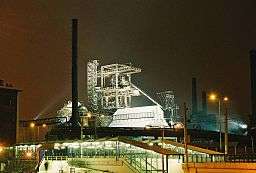 |
France
| City | Name of location | Current purpose, preserved installations and public attractions | Photo | Official website |
|---|---|---|---|---|
| Uckange, Moselle, Lorraine | Parc du Haut-Fourneau (last operated by Lorfonte, decommissioned in 1991, opened to the public in 2007) | The site is open to the public as part of a park.[6] One blast furnace (U4) has been preserved, including cowper stoves. A colorful light installation illuminates the entire plant at nighttime. |  |
Germany
| City and region | Name of location | Current purpose, preserved installations and public attractions | Photo | Official website |
|---|---|---|---|---|
| Dortmund, Ruhr, North Rhine-Westphalia | Phoenix-West (formerly Hoerder Verein, last operated by Friedrich Krupp AG Hoesch-Krupp, decommissioned in 1998) | The area is currently in the process of being turned into a modern technology plant. Some of the remaining structures of the ironworks are intended to be incorporated into the new facilities, while others are supposed to be turned into a museum site. One blast furnace has been preserved, a second one has been mostly dismantled, only the outer frame, the Cowper stoves and the lower portion of the furnace itself remain. The site is currently only accessible to the public as part of guided tours along a walkway called the "Skywalk Dortmund", although the top platform of blast furnace 6 is not accessible to the public yet. However, unlike other sites in Germany, the inside of the remains of blast furnace 6 is accessible to the public. The outer frame of blast furnace 6 is considered for a re-purposed use, but there are no concrete plans yet. A colorful light installation illuminates the plant at special occasions in the summer. |  | |
| Duisburg, Ruhr, North Rhine-Westphalia | Landschaftspark Duisburg-Nord (formerly Thyssen-Hüttenwerk Meiderich, decommissioned in 1985, opened to the public in 1994) | The ironworks site has been integrated into a public park that tries to re-purpose existing structures with minimal modifications. Three complete blast furnaces have been preserved, including outer frames, furnaces, Cowper stoves, winch houses, and casthouses. The cowper stoves of blast furnace 5 are rust-free due to a zinc layer added during construction. The casthouse of blast furnace 1 has been turned into a multi-purpose hall including a newly added tribune which is used as a movie theater in the summer. The casthouse of blast furnace 2 has been turned into a climbing garden (primarily for children) which is only accessible upon reservation. Blast furnace 5, including winch house and cast house, has been turned into an observation platform that is open to the public, featuring information plates for the function of the blast furnace's individual components. A colorful light installation designed by Jonathan Park illuminates the entire plant at nighttime during the weekends, with a stripped-down version used on regular weekdays. |  | |
| Hattingen, Ruhr, North Rhine-Westphalia | Henrichshütte (last operated by Thyssen Stahl AG, decommissioned in 1987, opened to the public in 2000) | The ironworks site has been turned into a museum (part of the LWL-Industriemuseum). One complete blast furnace has been preserved, including the outer frame, furnace, Cowper stoves, winch house, and casthouse. A protective paint coating minimizes the rusting effects on the blast furnace's outer frame. Two of the Cowper stoves are also rust-free due to a zinc layer added during construction. Blast furnace 3, including the cast house, is one of the main components of the museum and features numerous information plates, exhibition pieces and documentary films on monitors. The blast furnace also serves as an observation platform. An elevator has been installed. A colorful light installation illuminates the blast furnace at night. |  | |
| Neunkirchen, Saarland | Altes Hüttenareal Neunkirchen (formerly Neunkircher Eisenwerk, last operated by ARBED, decommissioned in 1982, opened to the public in 1993) | The remains of the ironworks site have been integrated into a public park. New structures, such as pubs, a movie theater and a multi-purpose event hall, have been built around the remaining installations. A shopping mall is located adjacent to the park. Two blast furnaces have been preserved, including outer frames, furnaces and Cowper stoves. A protective paint coating minimizes the rusting effects on the blast furnaces. Blast furnace 6 is accessible to the public as part of guided tours. A colorful light installation illuminates the entire area at nighttime.[7][8] |  | |
| Sulzbach-Rosenberg, Bavaria | Maxhütte (last operated by NMH Stahlwerke GmbH, decommissioned in 2002) | Formerly an integrated steel mill, a large number of installations are currently in the process of demolition. Only a small core area, including the blast furnace itself, is intended for preservation. The site is currently not open to the public. One blast furnace remains, including cowper stoves. | | |
| Völklingen, Saarland | Völklingen Ironworks (Völklinger Hütte, last used by ARBED Saarstahl GmbH, decommissioned in 1986, put under monument conservation in 1992) | The ironworks site has been turned into a museum (declared UNESCO World Heritage Site in 1994). Six blast furnaces have been preserved, including outer frames, furnaces, Cowper stoves, and casthouses. As part of the museum site, the combined blast furnaces also serve as an observation platform, with the highest point being on top of a group of Cowper stoves. A colorful light installation designed by Hans Peter Kuhn illuminates the entire plant at nighttime. | |
Japan
| City and prefecture | Name of location | Current purpose, preserved installations and public attractions | Photo | Official website |
|---|---|---|---|---|
| Yahatahigashi-ku, Kitakyūshū, Fukuoka Prefecture, Kyūshū Island | Higashida Blast Furnace Memorial Square (formerly Yahata Steel Works, decommissioned in 1972, opened to the public in 1997) | The site is now a museum. The inside of the blast furnace is accessible to the public. One blast furnace has been preserved, including outer frame, furnace, cowper stoves and casthouse. A protective paint coating minimizes the rusting effects on the blast furnace. A light installation illuminates the site at nighttime. |  |
Luxembourg
| City | Name of location | Current purpose, preserved installations and public attractions | Photo | Official website |
|---|---|---|---|---|
| Esch-sur-Alzette | Esch Belval (last operated by ARBED, decommissioned in 1997) | The site is currently in the process of being converted into a multi-purpose area. Two blast furnaces have been preserved. |  |
Mexico
| City and country | Name of location | Current purpose, preserved installations and public attractions | Photo | Official website |
|---|---|---|---|---|
| Monterrey | Fundidora Park (Parque Fundidora, previously operated by Monterrey Steel Foundry Company, decommissioned in 1986, opened to the public in 1988) | The steel mill has been integrated into a public park, with a blast furnace serving as a museum. Two blast furnaces have been preserved, including cowper stoves. Blast furnace 3 is a museum and serves as an observation platform. An elevator has been installed. The entire plant is illuminated at night. An application to declare blast furnaces 1 and 3 UNESCO World Heritage Sites is currently pending.[9] |  |
Poland
| City and province | Name of location | Current purpose, preserved installations and public attractions | Photo | Official website |
|---|---|---|---|---|
| Starachowice, Świętokrzyskie Voivodeship | Museum of Nature and Technology Ekomuseum Jana Pazdura (Muzeum Przyrody i Techniki Ekomuzeum im. Jana Pazdura, last operated by Star, decommissioned in 1968, opened to the public in 2000) | One blast furnace has been preserved, including cowper stoves. | |
Romania
| City | Name of location | Current purpose, preserved installations and public attractions | Photo | Official website |
|---|---|---|---|---|
| Reşiţa, Caraş Severin County, | Inside TMK Resita, near the continuous casting plant. The number 2 blast furnace with a 700-cubic-meter capacity, built between 1959 and 1962, and it was permanently shut down in 1991. | There were two same type, Soviet-model blast furnaces and shared the same casthouse. The number 1 blast furnace was demolished between 2001 and 2002. The second blast furnace with its three Cowper type preheating stoves, smokestack, raw materials silos and plumbing are declared as historical monument since 2003. The furnace can't be visited because it is located inside the yard of an active steel mill, but can be seen very well from outside. | 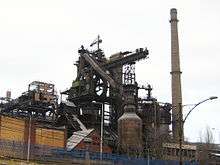 | |
Russian Federation
| City and province | Name of location | Current purpose, preserved installations and public attractions | Photo | Official website |
|---|---|---|---|---|
| Nizhny Tagil, Sverdlovsk Oblast | Nizhny Tagil Museum-Reserve of Mining and Metallurgy of the Middle Urals (previously Nizhny Tagil Metallurgical Combine/Kuibyshev Metallurgical Plant, decommissioned in 1987, integrated into the museum in 1992) | The steel mill has been turned into a museum. Two blast furnaces have been preserved, including cowper stoves. |  | |
| Polevskoy, Sverdlovsk Oblast | Museum Complex "Seversky Blast Furnace" owned by Seversky Tube Works (TMK Group). | The decommissioned blast furnace built in 1860, rebuild in 1896 and has been turned into a museum in 1980-s. |
Spain
| Place and province | Name of location | Current purpose, preserved installations and public attractions | Photo | Official website |
|---|---|---|---|---|
| Puerto de Sagunto, Sagunto, Camp de Morvedre, Valencia | Altos Hornos del Mediterráneo (decommissioned in 1984) | One blast furnace has been preserved, including the outer frame. The blast furnace is currently intended to be turned into a museum site following the examples of Völklingen Ironworks and Fundidora Park.[10] | | |
| Sestao, Biscay, Basque Country | Altos Hornos de Vizcaya (decommissioned in 1996) | One blast furnace has been preserved, including the outer frame, winch house and cowper stoves. |  |
United States
| City and country | Name of location | Current purpose, preserved installations and public attractions | Photo | Official website |
|---|---|---|---|---|
| Bethlehem, Pennsylvania | Bethlehem Steel (decommissioned in 1995) | The site is now the location of the Sands Casino Resort Bethlehem. Five blast furnaces were left standing, including cowper stoves. The plant was intended to be incorporated into The National Museum of Industrial History, however the bankruptcy of Bethlehem Steel and the sale of assets to ISG put that on hold. The blast furnaces are now the property of the Sands Casino Resort Bethlehem, as are other remaining structures intended for the NMIH. |  | |
| Rankin, Pennsylvania | Carrie Furnace (last operated by U.S. Steel Homestead Steel Works, decommissioned in 1978) | Two blast furnaces have been preserved, including cowper stoves. The site is open to the public as part of guided tours and is currently planned to be incorporated into a Homestead Works National Park.[11] |  | |
| Birmingham, Alabama | Sloss Furnaces (decommissioned in 1971) | Pig iron-producing blast furnace from 1882 to 1971. Two blast furnaces have been preserved, including cowper stoves. Designated a National Historic Landmark in 1981, the site currently serves as an interpretive museum of industry and hosts a nationally-recognized metal arts program. It also serves as a concert and festival venue. | | |
References
- ↑ The oldest blast furnace in Ukrain is 200 years old, the article in the Chicago Ukrainian newspaper “Українське слово” “Ukrainian word”.
- ↑
- ↑
- ↑ Cadw
- ↑ Pending application to declare the Industrial Complexes at Ostravaa UNESCO World Heritage Site, UNESCO, July 2001.
- ↑ German language article on the Uckange plant
- ↑ Altes Hütten Areal Neunkirchen at Industriekultur und Tourismus im Saarland (in German)
- ↑ Neunkirchen blast furnaces at Lebendige Stadt
- ↑ Pending application to declare Fundidora blast furnaces 1 and 3 UNESCO World Heritage Sites, UNESCO, October 2008.
- ↑ Blog entry explaining the plans for the Sagunto blast furnace, April 28, 2009.
- ↑ Photo Essay: Pittsburgh’s Carrie Blast Furnace, June 18, 2009.